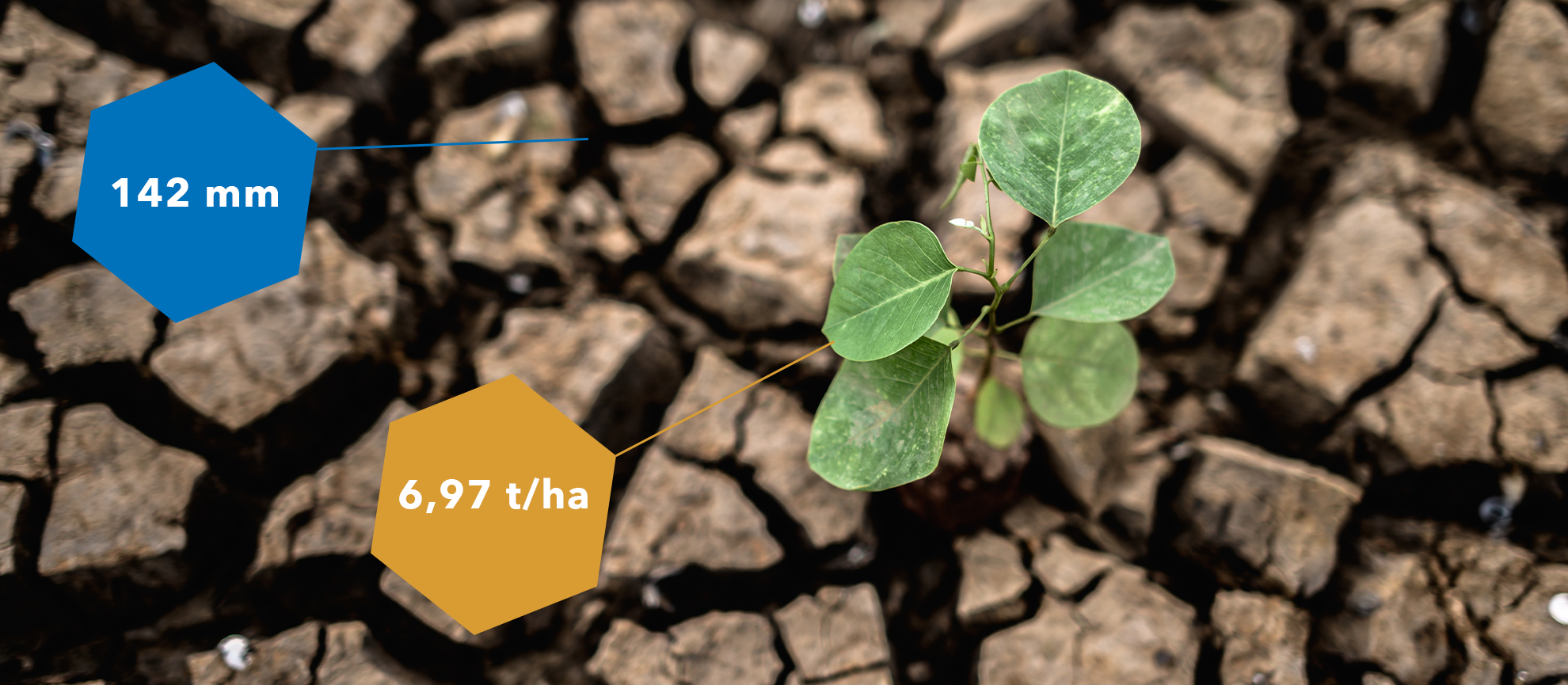
read time 7 minutes
January 11, 2023
Which maize varieties serve YOU the best?
Check other farmers’ choice
Looking back on the past production year, it is safe to say that 2022 will long be seen as an example year for farmers, unfortunately not because of the positive experiences. In 2022, the climatic conditions were the biggest enemy of arable farmers. The lack of rainfall caused serious concerns at the beginning of the year and these conditions did not subsequently improve in a way that gave farmers any cause for reassurance. Drought and lack of rainfall prevailed throughout the region, leading to an early start harvesting, which again affected yields. In this article we want to focus on the effects and solutions of this situation mainly focusing on the importance of variety selection with the help of AgroVIR farm management software.
In Central-Eastern Europe, climatological and economic factors triggered their profoundly disruptive effect on agriculture within just a few years.
Perhaps one of the most serious recent scourges on the successful cultivation of our extensive crops has been the severe drought in the summer growing season of recent years, which has become almost impossible to grow.
Despite its tropical origins, maize is a warmth-loving plant with excellent adaptability, but it cannot survive in the absence of water. If there is no usable moisture in the soil and the deeper layers are not replenished, coupled with weeks of heat, damage to the vegetation is inevitable.
Despite the slight rainfall deficit, sowing in the spring of 2022 was mostly on a good schedule. The plants grew at a good rate and steadily from the initial period until the period before the generative parts were formed. Under optimal conditions, successive developmental stages benefited from optimal climatic support, in several cases the appearance of a second cob initiation was observed.
The decisive turning point came at the flowering stage. The extremely high temperatures and the lack of rainfall caused the remaining reserve water in the soils to evaporate, leading to the rapid development of atmospheric and soil seepage. The plants responded to the sudden extreme soil and atmospheric conditions by evaporating their own vegetative water reserves, resulting in stands that initially "fluted" and then dried out, in the middle of the growing season. The dependence of maize on hydrological factors is further underlined by its essential need for moisture and water at flowering. Low humidity in high temperatures strongly inhibits maize fertility cause under dry conditions maize pollen is unable to bind to the pistil and fertilise the female gamete via the pollen tube.
So, the main question is, what can we do to minimise the damages, let them be weather or economical related.
Considering the experience and conditions of this year, the weakening of maize's position in our region is forecasted. It is important to note, based on AgroVIR’s database we concluded, that the agrotechnology, sowing date, length of growing season and chosen variety can visibly reduce or aggravate the damage caused by extreme climatic conditions.
The solution lies in data - AgroVIR
In agriculture it can be hard to manage to collect and present everyday data in a form from which we can deduct reliable conclusions and make important choices right, however the profitability of our business is hardly depending on everyday decisions.
AgroVIR farm management software as the leading decision support software of Central-Eastern Europe, provide data from farmers to farmers from over 500 000 hectares of arable land. Thanks to AgroVIR you can get a clear view over not only your seasonal but everyday costs and monitor which applied practices or chosen varieties could produce higher yields.
With AgroVIR farm management software – agricultural companies have the possibility to analyse real data from production years with a statistical eye even not only on field but the level of individual machines and employees. The function is available to all AgroVIR users in an anonymised form, allowing them to compare and monitor their level of success, costs, and technologies with other participants in the sector categorised by the quality of their data. This opens the way for improvement, avoiding errors and extra costs.
Evolution of maize yields in the light of the selected variety, past 3 years
In order to get the most out of your plants, you need to choose the variety carefully, and that’s where AgroVIR kicks in and serves the possibility to monitor the performance of your chosen varieties or check other farmer’s picks within AgroVIR community either in your region or countrywide.
Let’s have a look on last three years data regarding varieties and their average yield based on AgroVIR community’s data. The applied criteria were that only those varieties can be shown which sowing area is over at least 150 hectares and the data is originated from over five different fields.

The presented hybrids on Figure 1. are grain hybrids and are mostly from the 400-499 FAO section with the exceptions of DKC 4611 (FAO 350-360), KWS Kashmir (FAO 350-400) and DKC 4943 (FAO 390-410). Regarding the variety owner’s descriptions all the hybrids named on Figure 1. have a high or superior drought tolerance which provides resilience when it’s dry and yield responsiveness with favourable growing conditions
In case we take a closer look there are varieties presented on the list (such as KWS Durango) with the ability to withstand high levels of atmospheric drought during and after flowering period.
In our opinion if the climatical conditions stays as unfriendly during the flowering period as they were this year this property might have a key role in successful maize cultivation in the future.
